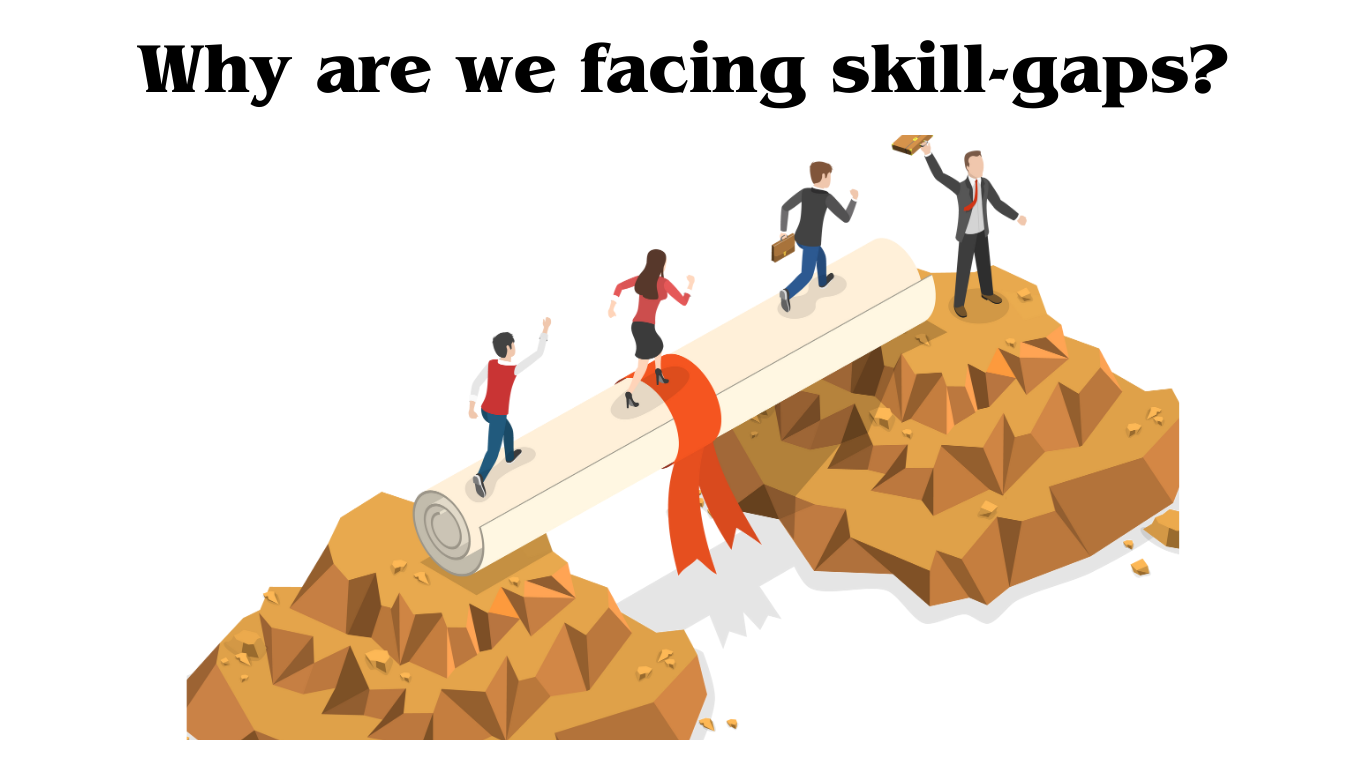As the head of an IT company, I am acutely aware of the opportunities and challenges that lie ahead for our nation. India, with its vast and youthful population, is uniquely positioned to become a global leader in technology and innovation. However, a significant skill gap threatens to undermine this potential. To ensure our global competitiveness, we must address this gap head-on. In this article, I will explore the reasons behind the skill gap and propose actionable strategies to bridge it, ultimately creating a future-ready workforce.
Understanding the Skill Gap in India
The skill gap is a difference between the skills employers need and the skills that job seekers possess. In India, this gap is influenced by several key factors
- Outdated Curriculum: Our education system often relies on outdated curriculums that do not align with current industry demands. Students are taught theoretical concepts without practical applications, leaving graduates underprepared for real-world challenges.
- Lack of Soft Skills Training: Soft skills, such as communication, teamwork, and problem-solving, are not adequately emphasised, creating a workforce that struggles with these essential attributes.
- The rapid pace of technological change means that the skills required in the job market are continuously evolving. Many workers find it challenging to keep up, leading to a mismatch between their skills and those in demand.
3. Inadequate Training programmes
- Vocational training programmes often suffer from poor infrastructure, outdated equipment, and a lack of qualified trainers. This results in subpar training outcomes, contributing to the skill gap
4. Regional Disparities
- There is a significant disparity in skill development opportunities between urban and rural areas. Rural regions often lack access to quality education and training facilities, widening the skill gap.
- Curriculum Modernization: We need to update educational curricula to include emerging technologies and industry-relevant skills. Practical training, internships, and real-world problem-solving projects should be integral parts of the curriculum.
- Soft Skills Integration: Courses that focus on developing soft skills should be introduced. Activities that foster teamwork, leadership, and effective communication must be encouraged.
- Public-Private Partnerships: Industries should collaborate with vocational training centres to design and deliver programmes that meet current and future market needs. Training should be practical and include hands-on experience with modern equipment.
- Certification and Standardisation: Standardised certification programmes recognised by industries will ensure that vocational training graduates are job-ready.
Leveraging Technology for Training:
- Online Learning Platforms: Promoting the use of online platforms and MOOCs (Massive Open Online Courses) can provide accessible and affordable skill development opportunities.
- Digital Literacy Programmes: Implementing programmes to improve digital literacy, particularly in rural areas, will ensure that everyone can benefit from online learning resources.
Fostering Lifelong Learning:
- Continuous Learning Culture: A culture of continuous learning and up-skilling among employees must be encouraged. Incentives for workers to pursue further education and skill development throughout their careers should be offered.
- Skill Development Funds: Establishing funds to support continuous learning initiatives is essential. Companies can contribute to these funds to help employees stay current with industry trends and technologies.
Addressing Regional Disparities:
- Rural Skill Development Centres: Dedicated skill development centres in rural areas, equipped with the necessary infrastructure and qualified trainers, should be set up. These centres must offer a wide range of courses relevant to local and national job markets.
- Government Incentives: Providing incentives for businesses to invest in skill development programmes in underserved regions will help bridge the urban-rural divide.
Bridging the skill gap in India is crucial for our economic growth and competitiveness on the global stage. By modernising the education system, enhancing vocational training, leveraging technology, fostering a culture of lifelong learning, and addressing regional disparities, we can create a workforce that is equipped to meet the challenges of the future. As stakeholders, we must work together to implement these strategies, ensuring that India's vast talent pool is fully harnessed and prepared for the evolving job market.
Together, we can transform India's workforce and unlock the full potential of the brightest minds.







